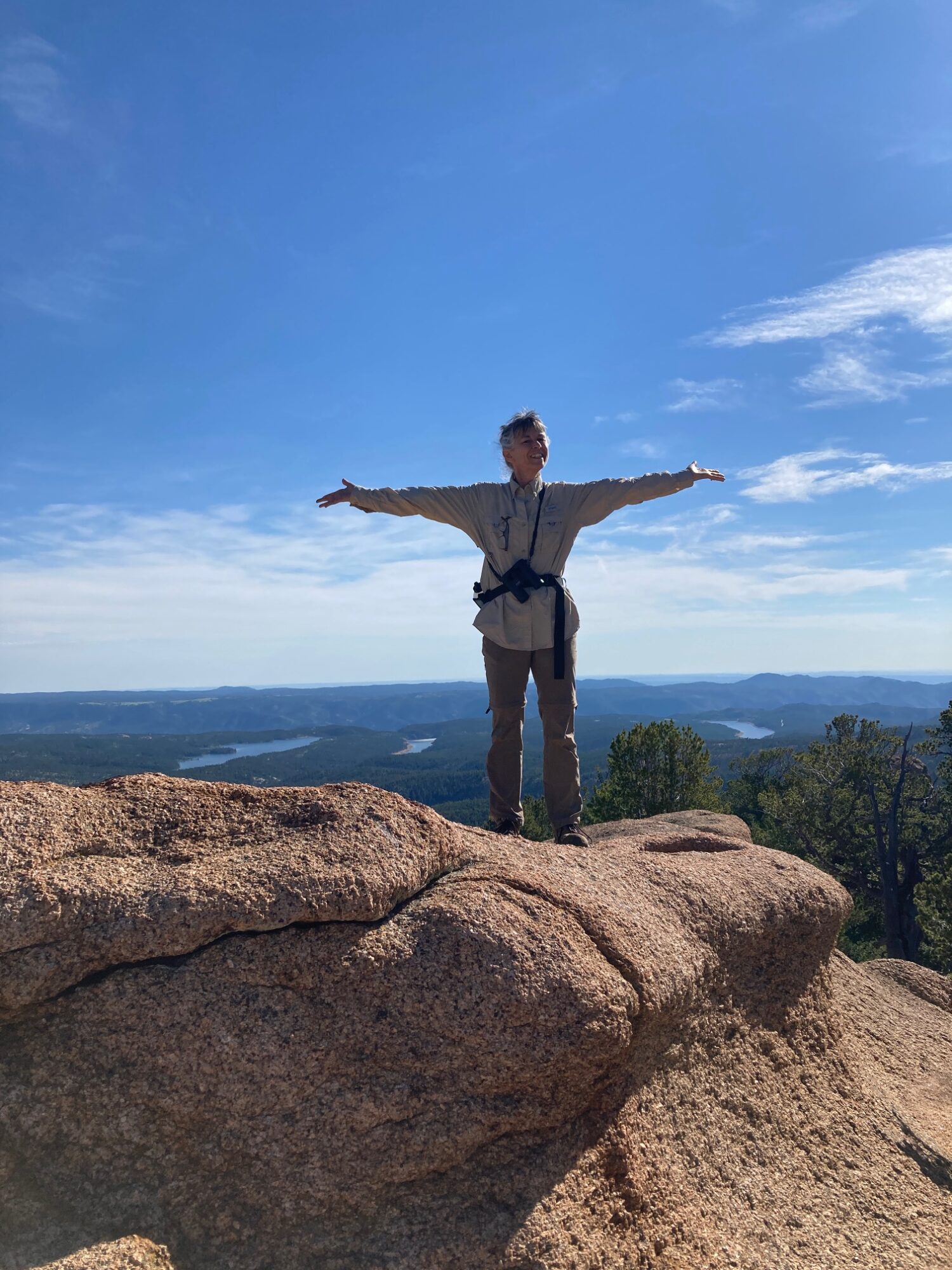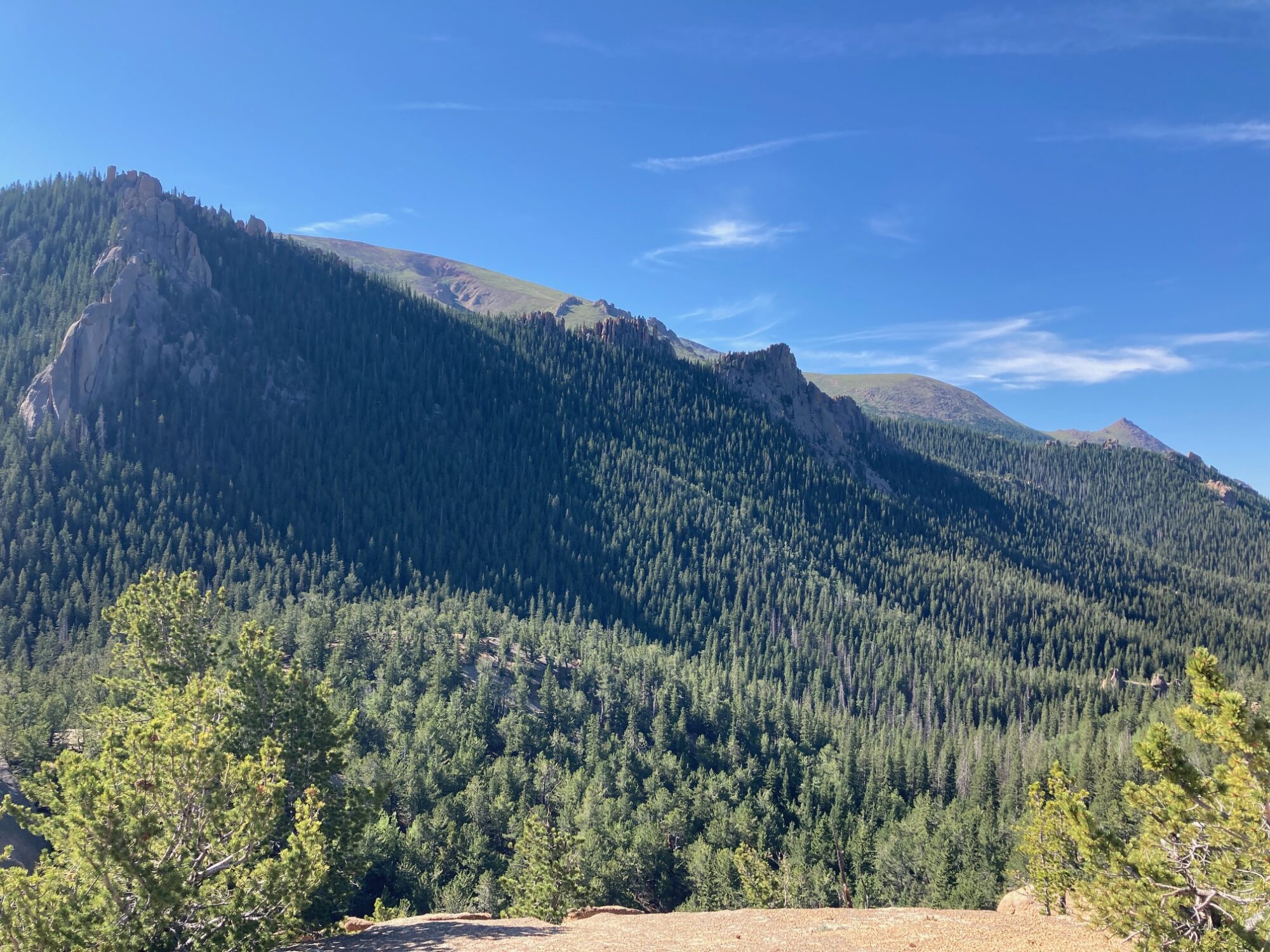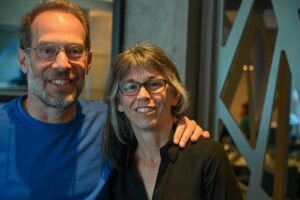
Nancy and I are recently back from three and a half weeks in Italy, a marvelous trip that took us to Rome, Venice, Lucca (in north Tuscany), San Quirico d’Orcia (in south Tuscany), Florence, Orvieto (in Umbria), and finally back to Rome for a couple of nights before our flight back to the States. It sounds like a whirlwind, but really it wasn’t. We had plenty of time in most places (a person could spend six weeks each in Florence and Rome, and still not see everything . . .), and did a good deal of our in-country traveling by train, which reduced the stress of getting around considerably. (The one exception was Tuscany, where we rented a car for six days, enabling us to visit several small, mountaintop medieval cities that aren’t served by the train system.)


Faced now with the prospect of summarizing our trip for this post, I am a bit overwhelmed. We saw and did so much. Much of it falls into one of three or four categories — we walked A LOT; we ate A LOT and drank a bit as well; we saw many of the Sights That One Sees In Italy; and we hung out with friends in Florence, where two couples we know and love were on extended work-related stays.
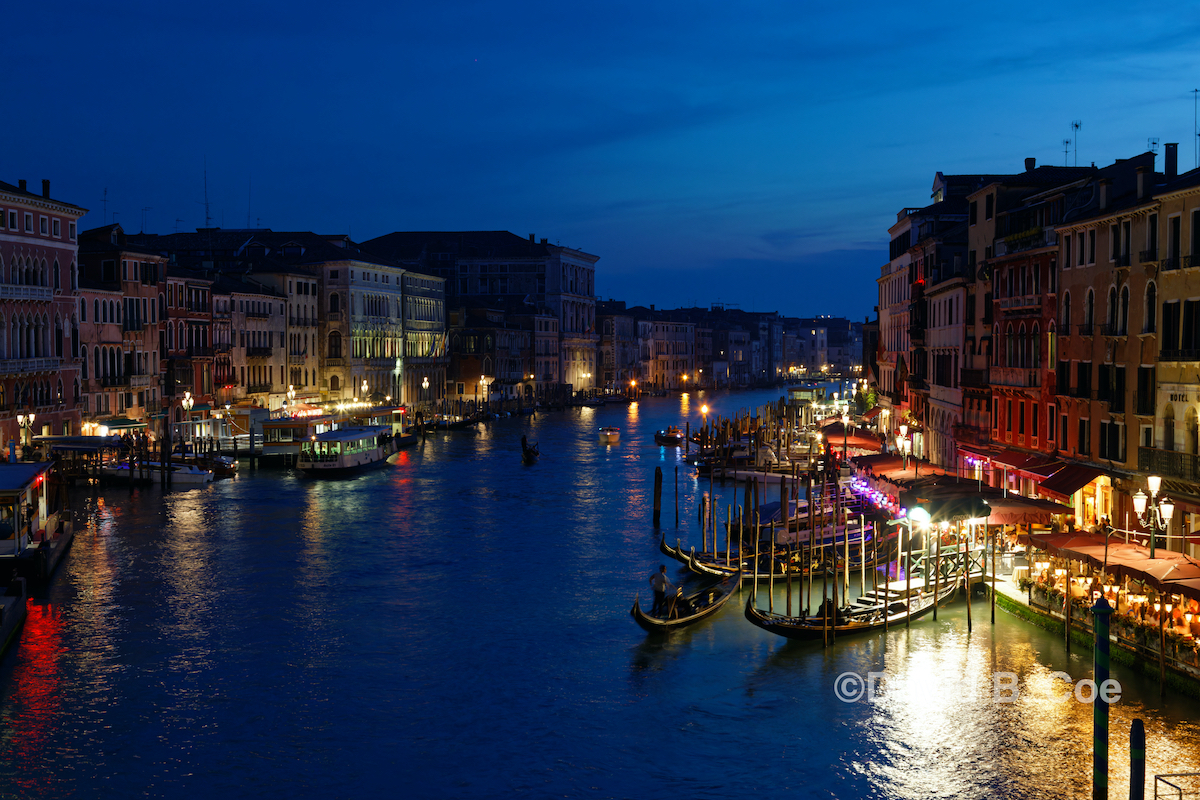
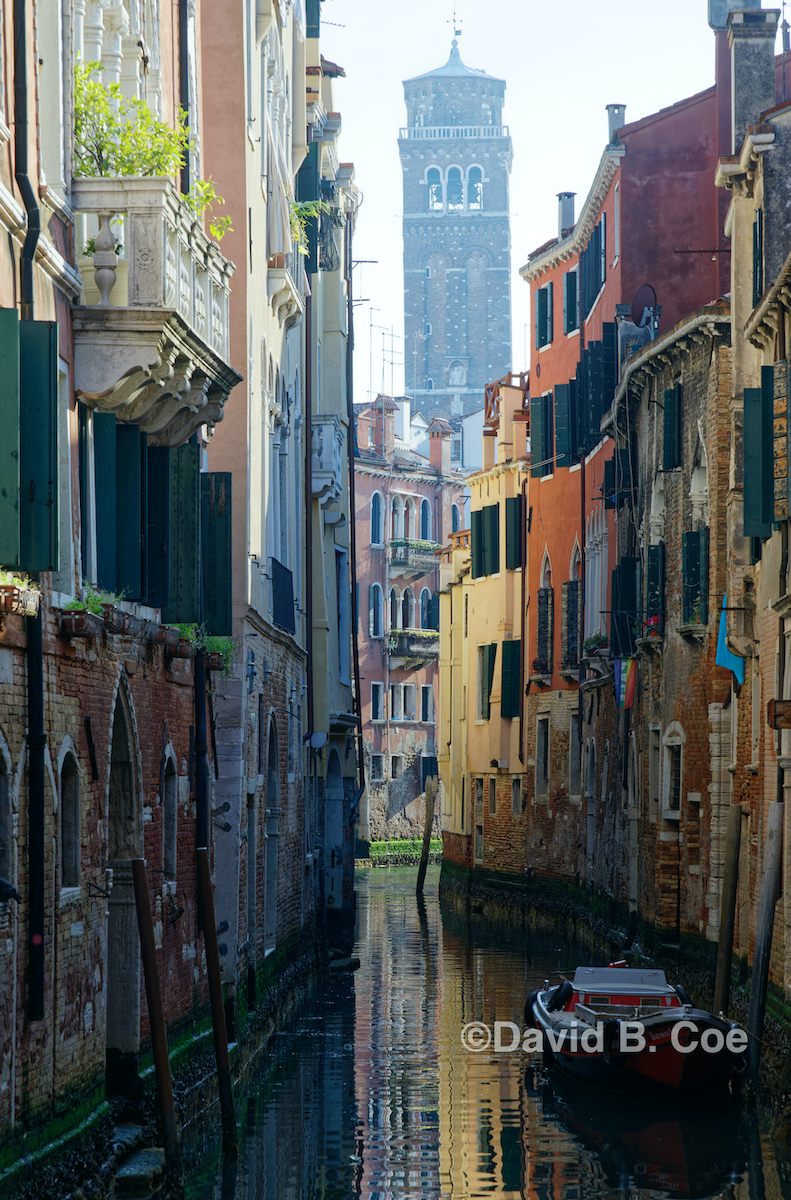
No matter where Nancy and I go on any trip, we wind up walking long distances. We feel that the best way to get to know a place is to explore it on foot, and as it happens, many of Italy’s cities lend themselves to this sort of exploration. Sometimes we walked with destinations in mind. Our first two days, when we were in Italy and still struggling with a little jet lag, we walked from our accommodations to the Colosseum and to Vatican city. After visiting those sights, we walked some more, looking for places to eat, stopping in at interesting shops or at yet another gorgeous cathedral from the 1400s. When we moved to Venice, we walked even more. What a gorgeous city! Every turn, every new lane or alley leads to another canal, another beautiful foot bridge, another view of a gondola or some other boat. It is a playground for light and shadow, for color and reflection, and for any who fancy themselves photographers.
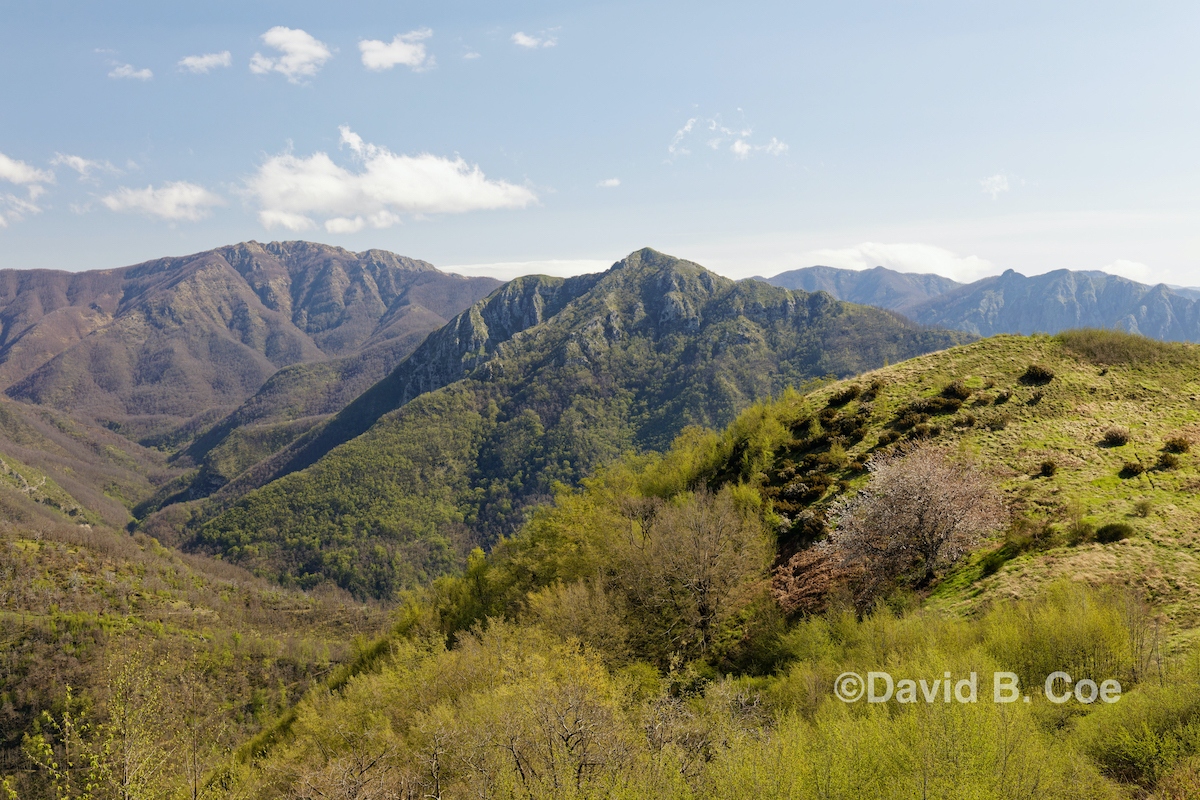
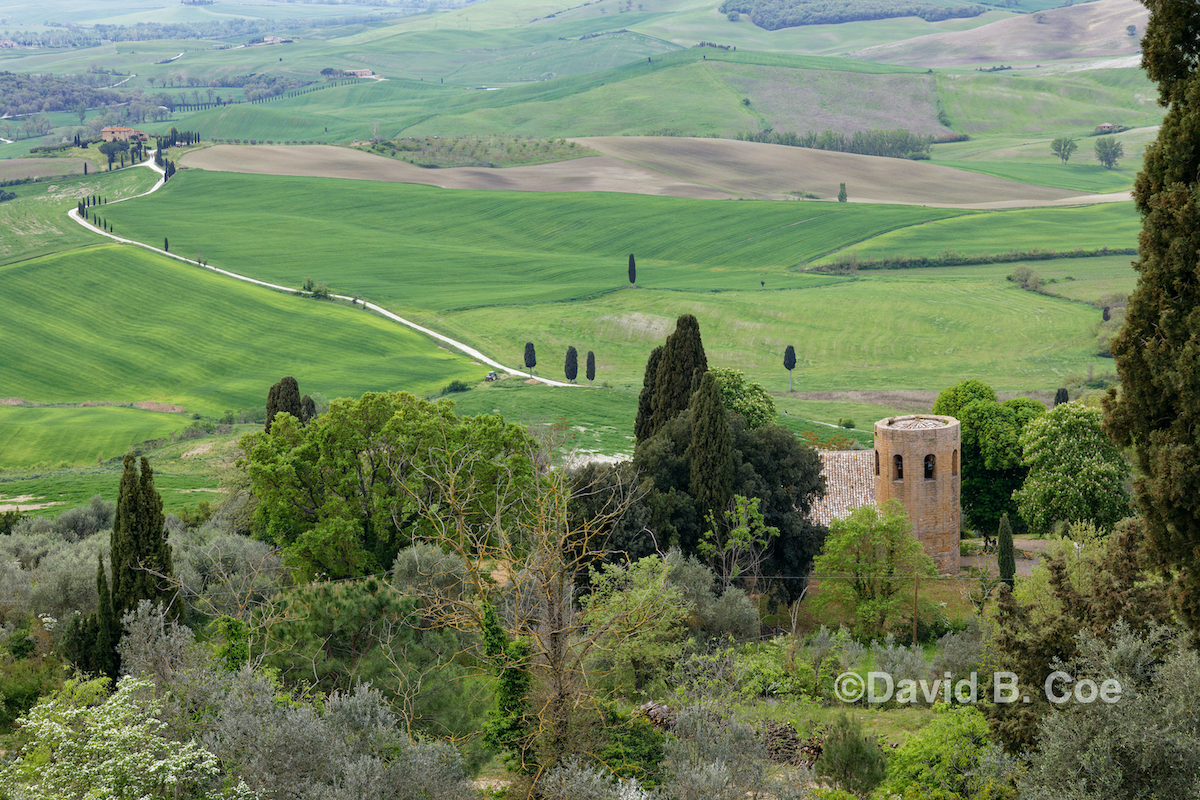
While we were in Lucca, we found a hike that took us high into the Central Apennine Mountains. It was, in a word, spectacular. We had a perfect day — clear, breezy, cool — and were afforded incredible mountain vistas and equally beautiful views down toward ancient Tuscan mountain villages. The trail itself was a little rough, but still, it was a memorable morning. Tuscany in general was amazing. We stopped in San Gimignano, Montepulciano, Siena, Pienza, and Montalcino, where we enjoyed a fabulous wine-tasting and lunch at the Poggio Rubino Winery. Each of these cities was breathtaking and steeped in history. If we go back to Italy at some point, I think I could spend another week in Tuscany and never grow tired of the landscape, the food, the wine, the people. We had a similar experience in Orvieto, in the neighboring region of Umbria. Also stunningly beautiful, also rich in history, cuisine, and winemaking.

Florence as a city offers a compromise of sorts between Venice and Rome. Venice, as I said, is visually captivating. But there is an emptiness to it beyond the beauty and the tourist culture, which is ubiquitous. It felt at times as if, without the shops and restaurants and tourism industry, the city would simply cease to exist. Rome, on the other hand, is so huge as to be overwhelming. There is a tourist core to the city — in the old sections around the Roman ruins and various museums and duomos. But there is also Vatican City. There is a vast, thriving fashion industry. And there is as well a bustling urban center, with business and industry, contemporary culture, and everything else one might expect a world capitol to have.
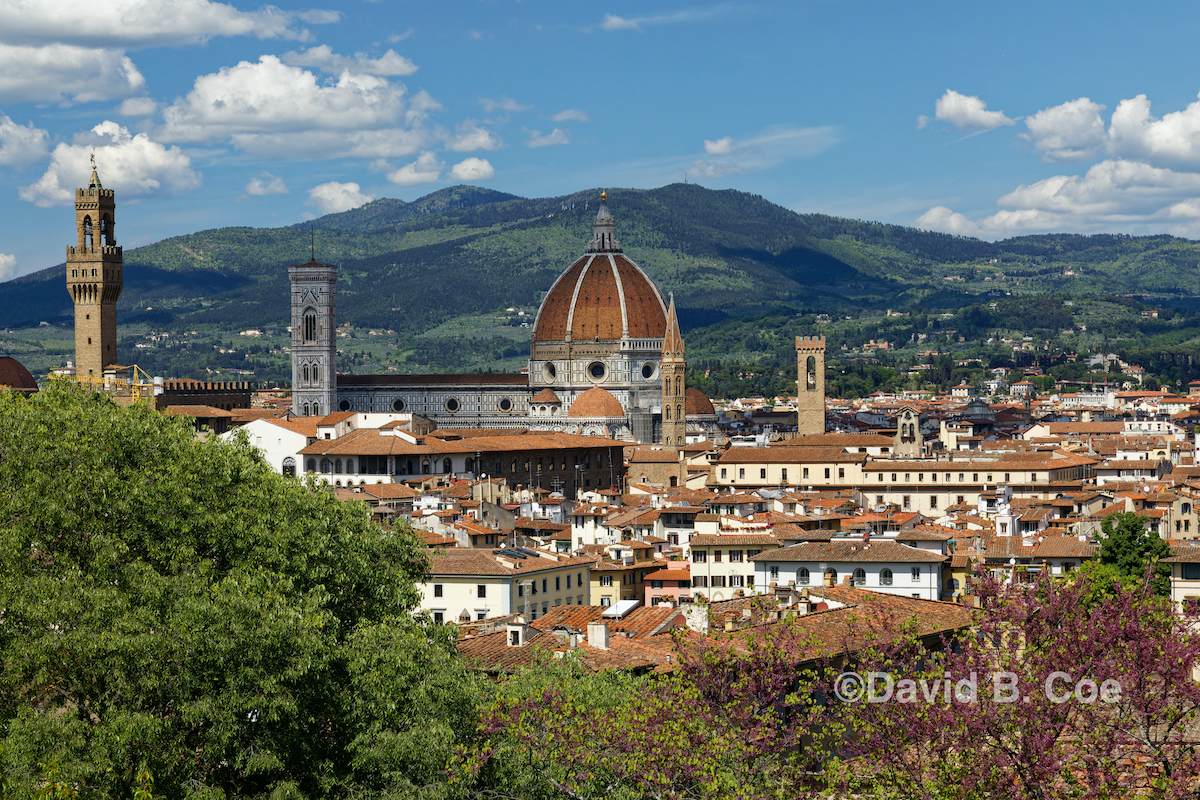
Florence is, in many ways, as beautiful as Venice and as historically and culturally rich as Rome. But it offers more than Venice on a scale that is more welcoming than Rome. And for us it was doubly special, because of the friends we had there. These were two couples from utterly disparate parts of our lives. But they both happened to be there at the same time, and, it turns out, they got along really well. So much fun!! We had companions for so many of our meals, several of our sightseeing ventures, and even a couple of shopping sprees. While in Florence, Nancy and I also took a cooking class, which was great. We learned a ton and made by hand, without any sort of machine, our own pasta, which we then ate with sauces prepared as we watched by a master chef.

As I said earlier, it’s so difficult to do justice to a trip of this length in a single post. But I have tried. I would offer a few other quick tidbits. We saw many, many duomos, cathedrals, county churches, etc. We saw Saint Peter’s Basilica and the Sistine Chapel. But I think our favorite was the Duomo di Siena, the interior of which was mind-blowing. One of the best things we did was attend a glass-blowing demonstration at the Murano Glass Factory in Venice. Extremely cool. We had so many terrific meals and tried so many new foods. My personal favorite was the pappardelle al ragù di cinghiale that I had several times in Tuscany. This is a broad ribbon of fresh pasta with a sauce made with wild boar — a traditional Tuscan recipe. Incredible. We also discovered the joys of Campari, Aperol, and other Amaro liqueurs. Campari, which is sweet at first with a strongly bitter finish, is the chief ingredient in a Negroni (equal parts gin, Campari, and sweet vermouth). Aperol is sweeter and less bitter, and is best known as the chief ingredient in an Aperol Spritz (Aperol and Prosecco). We drank a lot of both. And we fell in love with Brunello wines — delicious reds that are deeper and smoother in flavor than any wine I’d ever had before.
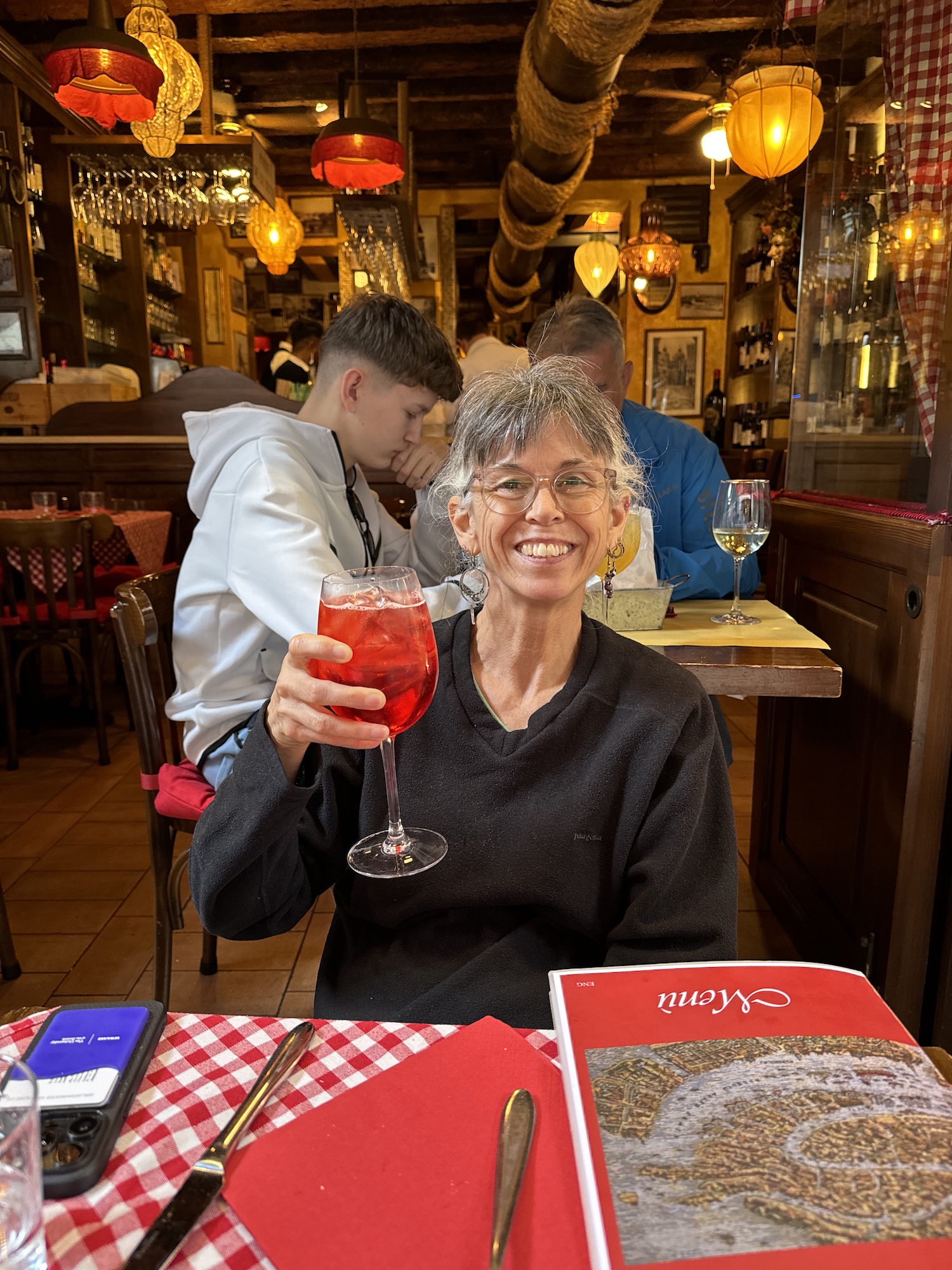
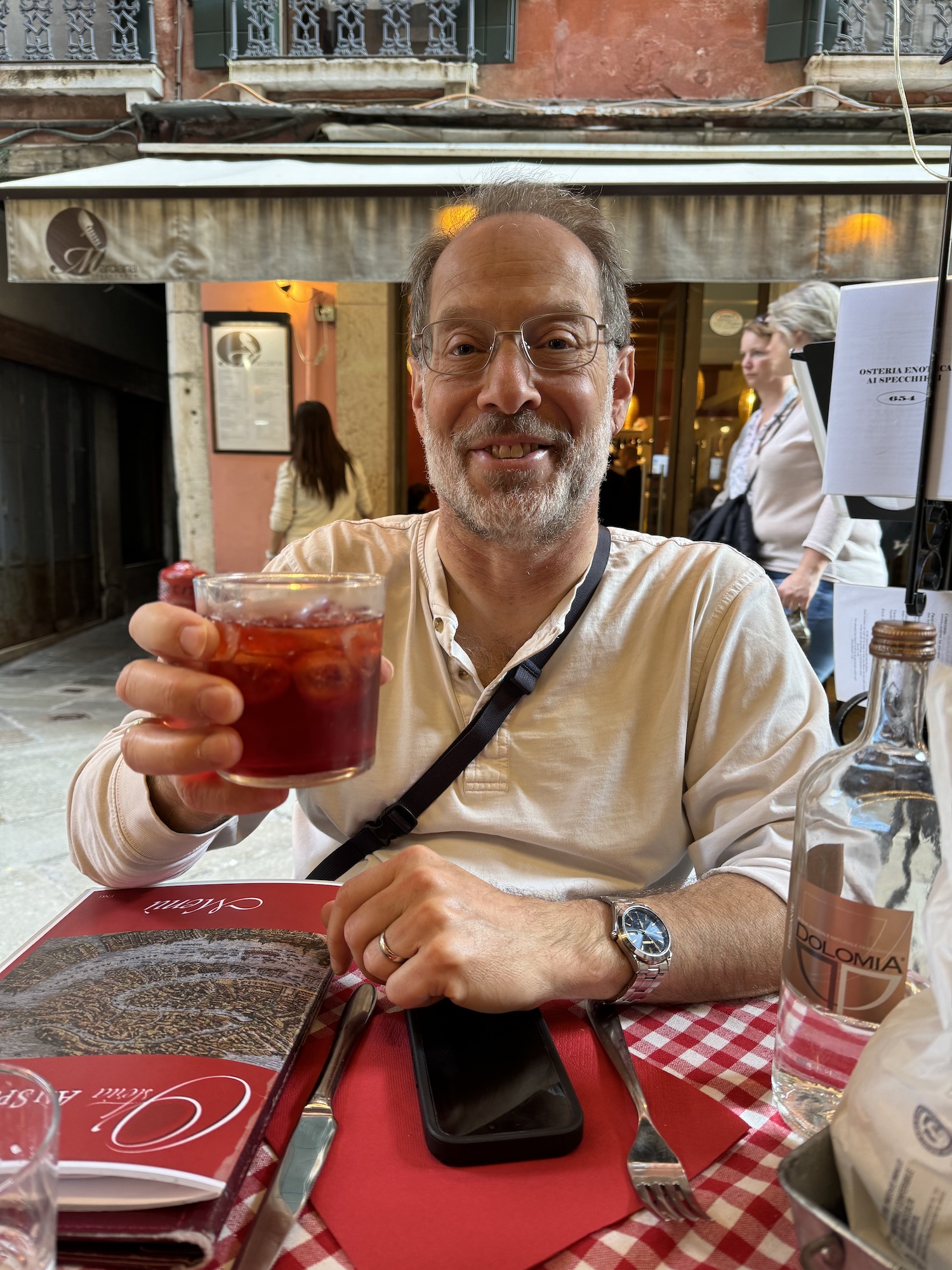
Hope you enjoy the photos!










 My mother would be 102 years old today, which speaks to a) how very old I am, and b) how uncommonly old she was when she and my father had me. I was born at the end of the Baby Boom, when most couples in their early-forties were done having children. Mom always worried that she would be too old to be a good mother to me, whatever that might have meant. She shouldn’t have worried. She was a wonderful mother — caring, involved, just intrusive enough to make me feel loved without being so intrusive that I felt smothered.
My mother would be 102 years old today, which speaks to a) how very old I am, and b) how uncommonly old she was when she and my father had me. I was born at the end of the Baby Boom, when most couples in their early-forties were done having children. Mom always worried that she would be too old to be a good mother to me, whatever that might have meant. She shouldn’t have worried. She was a wonderful mother — caring, involved, just intrusive enough to make me feel loved without being so intrusive that I felt smothered.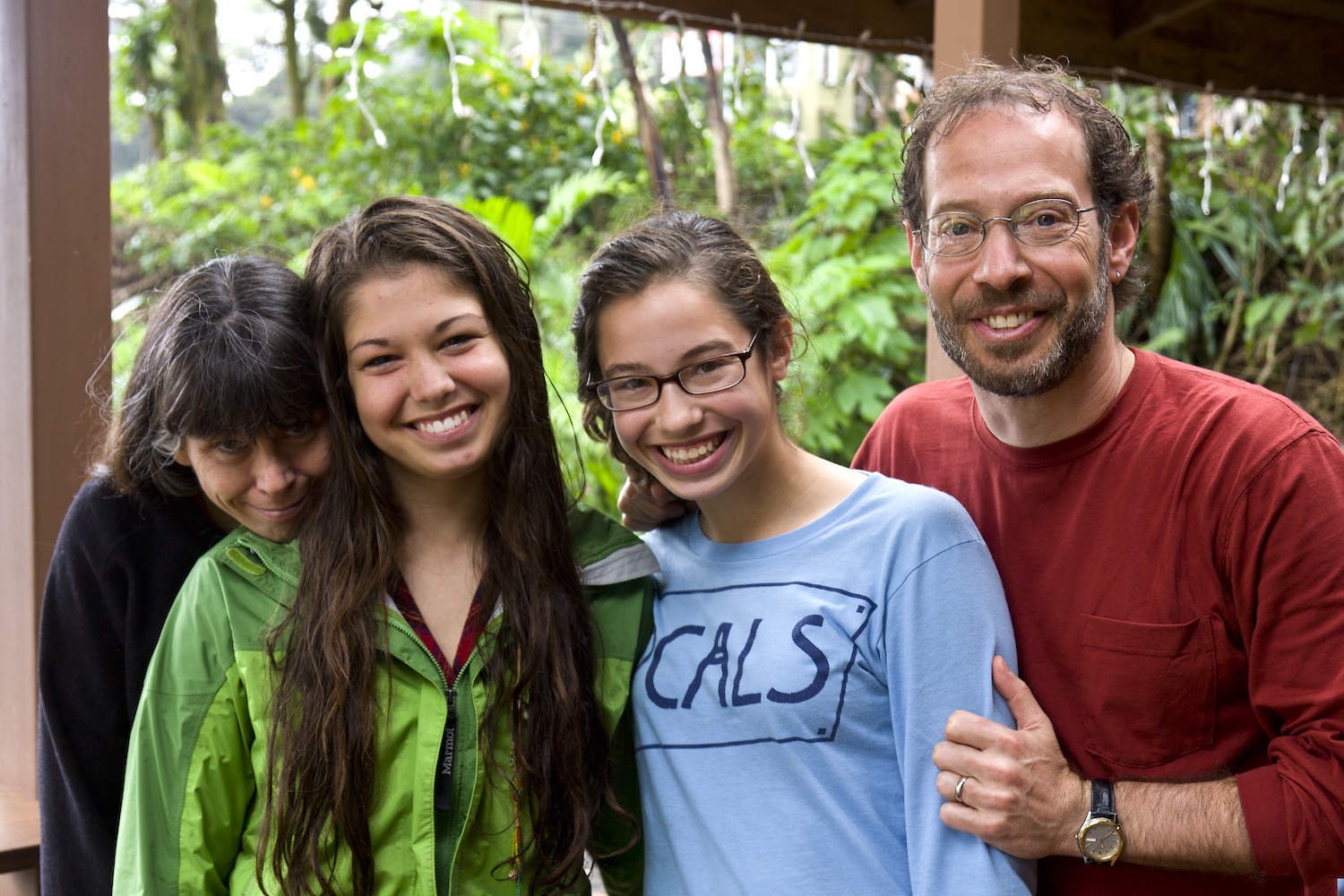
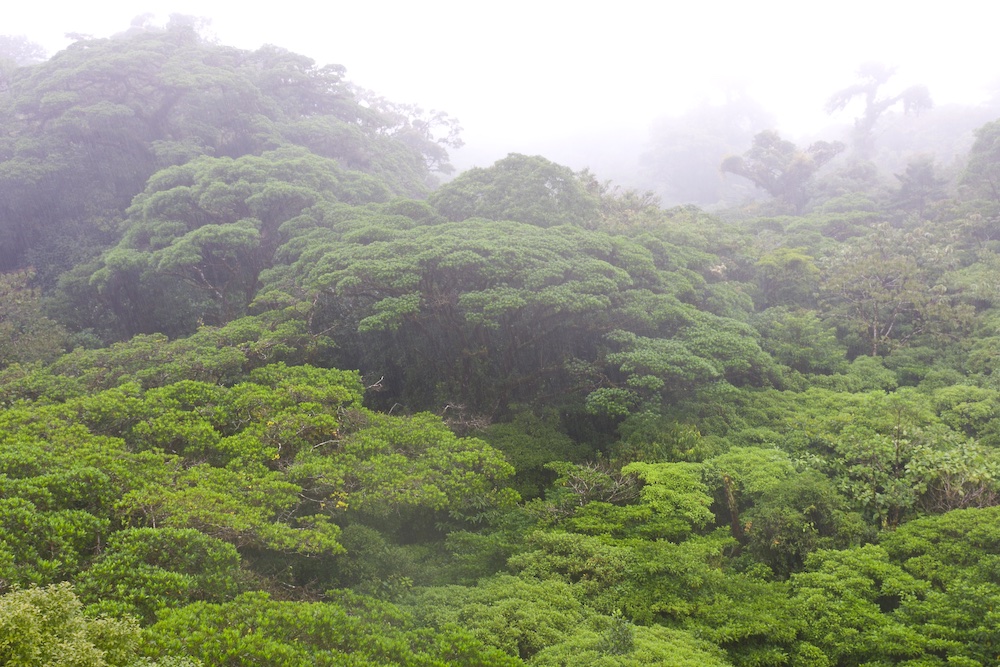 Within moments, I was gliding over lush rain forest, surrounded by a ghostly mist, utterly alone, and, it seemed, in a cocoon of sensation — birds called from the green below me, the air was redolent with the sweet scents of rain and earth and forest decay, mist cooled my face, the green of the damp foliage was so brilliant as to appear unreal. Time fell away. Yes, I was moving. But to this day, I couldn’t tell you how long it took me to float through that segment of the course. It could have been mere seconds. It could have been hours. It didn’t matter. For the purposes of that experience, time meant nothing to me. I had escaped the tyranny of clocks and calendars.
Within moments, I was gliding over lush rain forest, surrounded by a ghostly mist, utterly alone, and, it seemed, in a cocoon of sensation — birds called from the green below me, the air was redolent with the sweet scents of rain and earth and forest decay, mist cooled my face, the green of the damp foliage was so brilliant as to appear unreal. Time fell away. Yes, I was moving. But to this day, I couldn’t tell you how long it took me to float through that segment of the course. It could have been mere seconds. It could have been hours. It didn’t matter. For the purposes of that experience, time meant nothing to me. I had escaped the tyranny of clocks and calendars.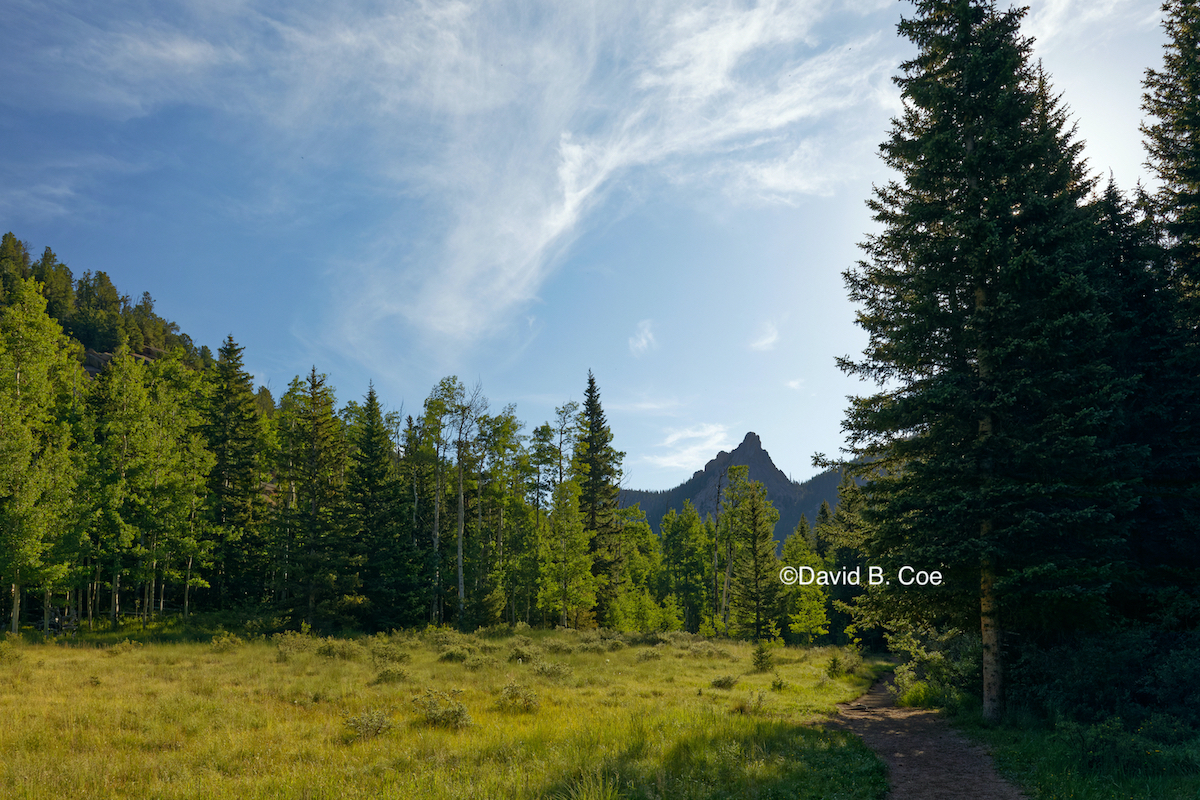 I spent this past weekend going through my photos, processing the images, and selecting a few to put in a rotation of favorites that show up on my computer desktop and in my screensaver slide show. And as I work through these images, I have been thinking about photography in general and where the technology that is now available to photography hobbyists has taken us.
I spent this past weekend going through my photos, processing the images, and selecting a few to put in a rotation of favorites that show up on my computer desktop and in my screensaver slide show. And as I work through these images, I have been thinking about photography in general and where the technology that is now available to photography hobbyists has taken us.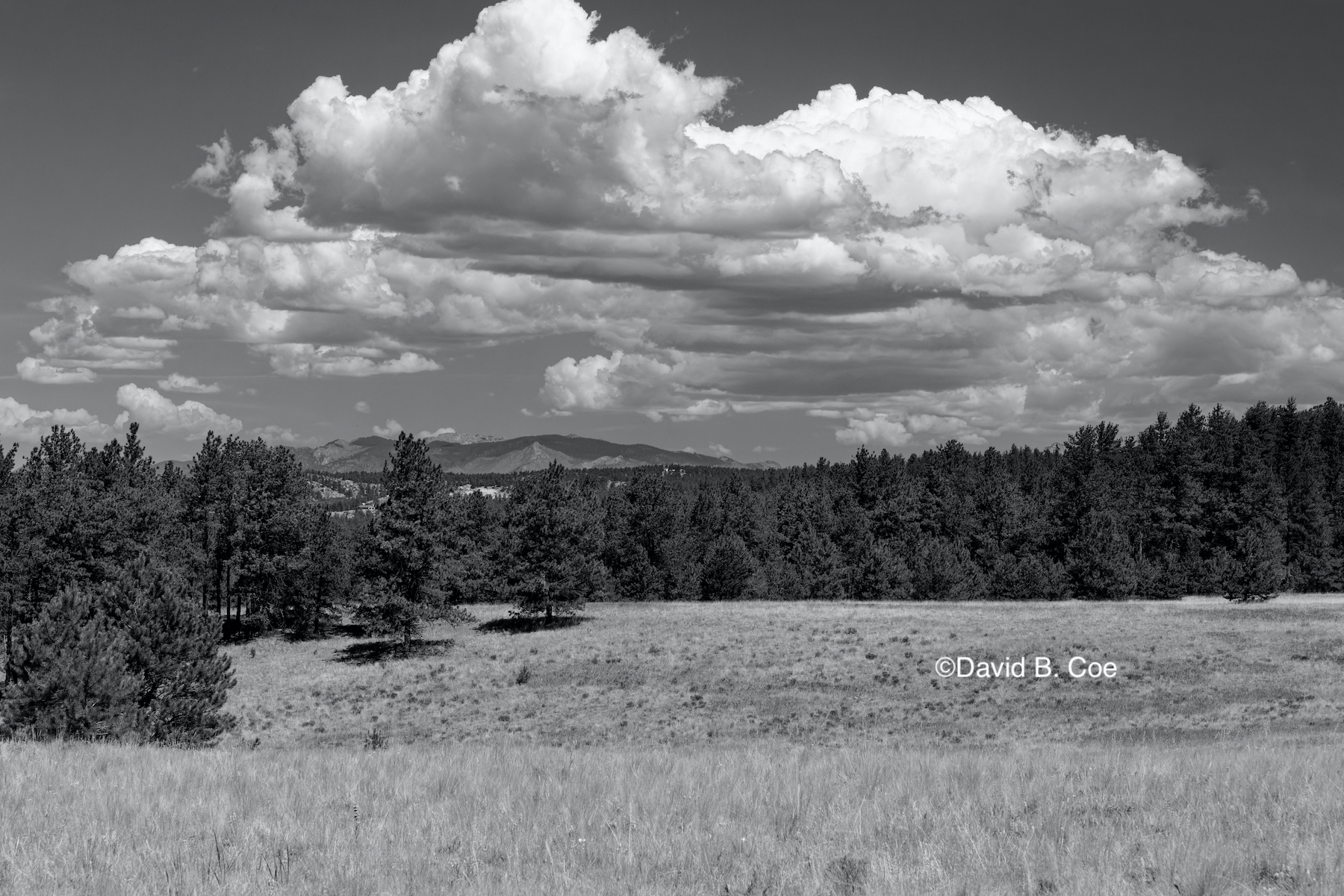 Some stores and processing centers were willing to consider special instructions — “please over- (or under-) expose slightly” or some such. But to be honest, I wasn’t good enough at that point to know with confidence that ALL my images would need the same special treatment, and so I just sent my film in and hoped for the best. More often than not, I was disappointed.
Some stores and processing centers were willing to consider special instructions — “please over- (or under-) expose slightly” or some such. But to be honest, I wasn’t good enough at that point to know with confidence that ALL my images would need the same special treatment, and so I just sent my film in and hoped for the best. More often than not, I was disappointed. Knowing what I do about the history of photography, I now understand how strange that consumer film process actually was. The old masters of photography — Edward Weston, Alfred Stieglitz, and most notably Ansel Adams did not leave it to Kodak or Fujifilm or any other commercial entity to develop their images. They held fast to every step of the creative process, from image capture to production of the final print. Photography as an art form was not limited to a mechanical blink of creative inspiration. Rather, it relied upon a complex and time-consuming manipulation of that initial capture, to turn the photo into exactly what the artist envisioned. Adams in particular used an approach he called “dodge and burn,” relying on a masterful understanding of darkroom tools and chemicals to darken certain parts of an image and brighten others. He and his contemporaries would never have dreamed of placing themselves at the mercy of film development labs.
Knowing what I do about the history of photography, I now understand how strange that consumer film process actually was. The old masters of photography — Edward Weston, Alfred Stieglitz, and most notably Ansel Adams did not leave it to Kodak or Fujifilm or any other commercial entity to develop their images. They held fast to every step of the creative process, from image capture to production of the final print. Photography as an art form was not limited to a mechanical blink of creative inspiration. Rather, it relied upon a complex and time-consuming manipulation of that initial capture, to turn the photo into exactly what the artist envisioned. Adams in particular used an approach he called “dodge and burn,” relying on a masterful understanding of darkroom tools and chemicals to darken certain parts of an image and brighten others. He and his contemporaries would never have dreamed of placing themselves at the mercy of film development labs. More, I no longer have to decide before going out in the field what sort of film to use. I can take an image that I know will work in color and follow it up immediately with one that I know I’ll prefer in black and white. Converting an image from color to grayscale is as simple as clicking a box. I love that freedom.
More, I no longer have to decide before going out in the field what sort of film to use. I can take an image that I know will work in color and follow it up immediately with one that I know I’ll prefer in black and white. Converting an image from color to grayscale is as simple as clicking a box. I love that freedom.
